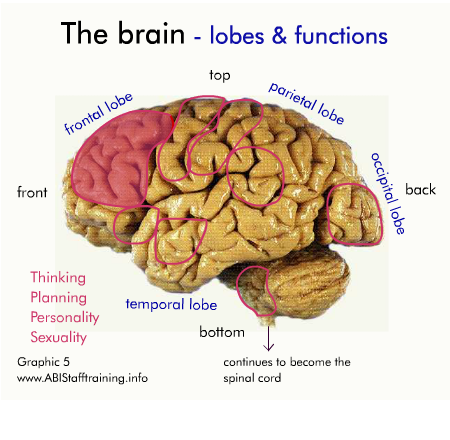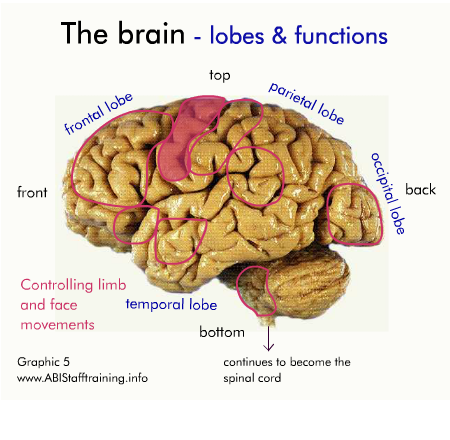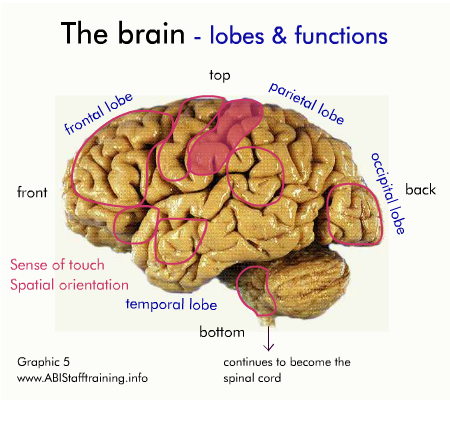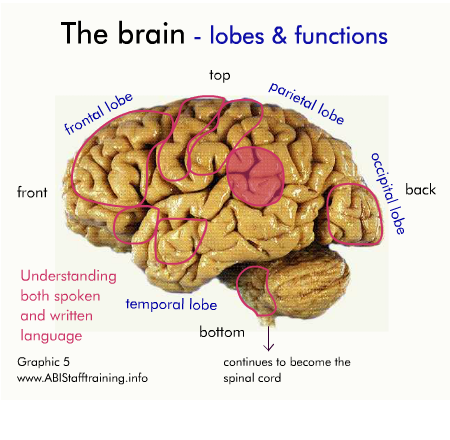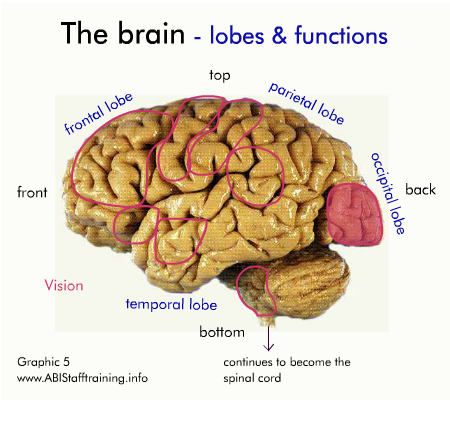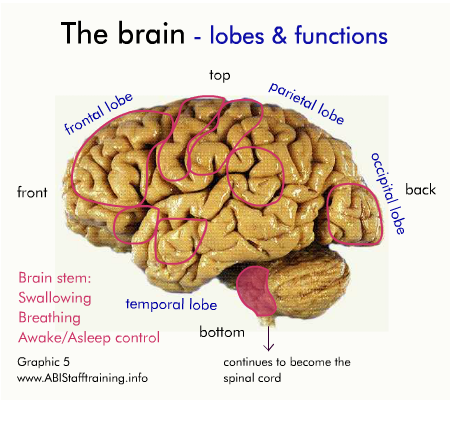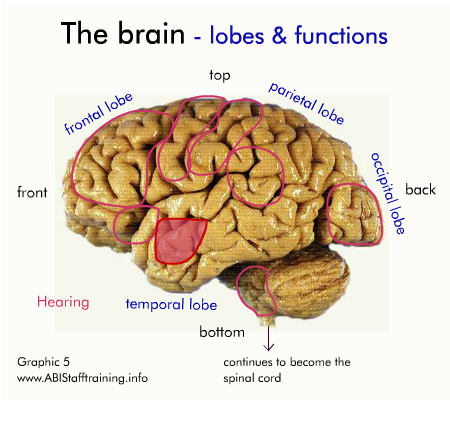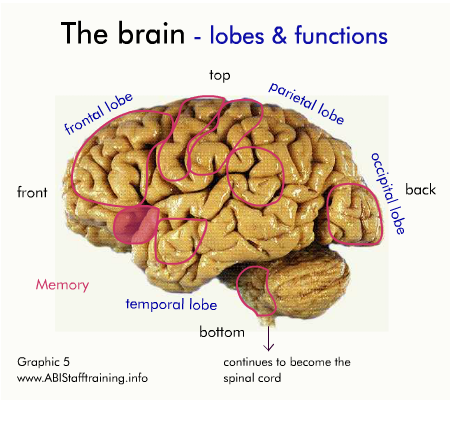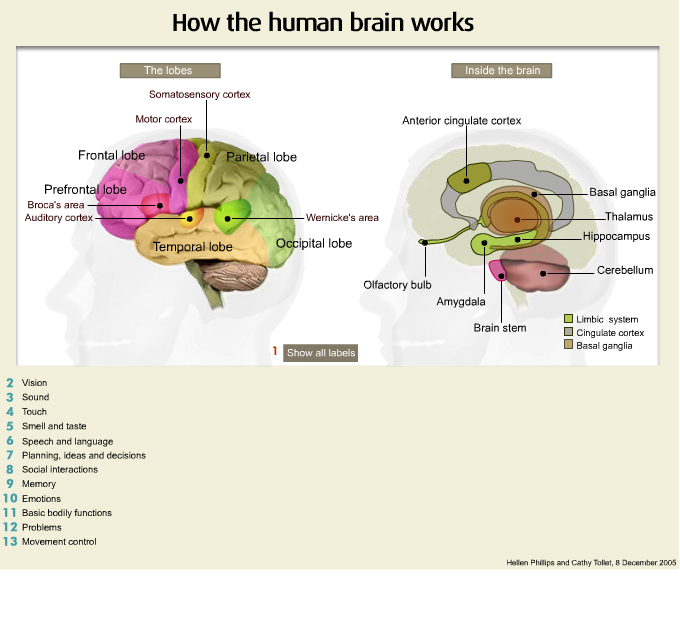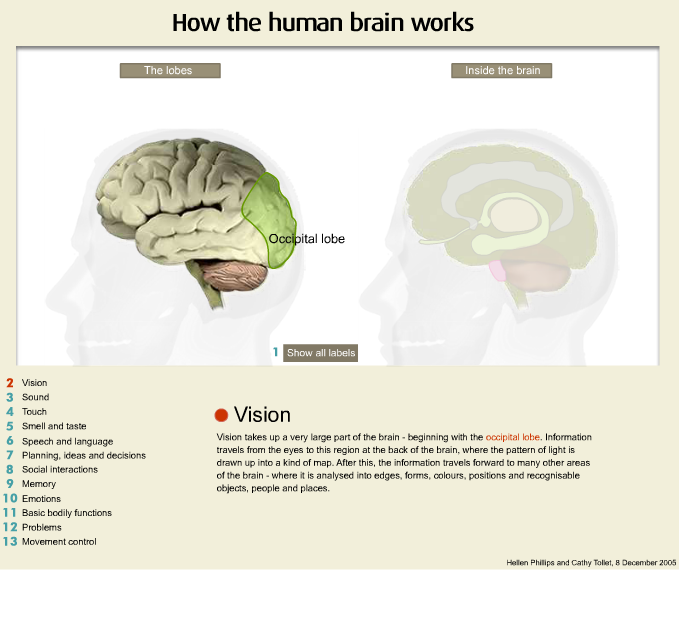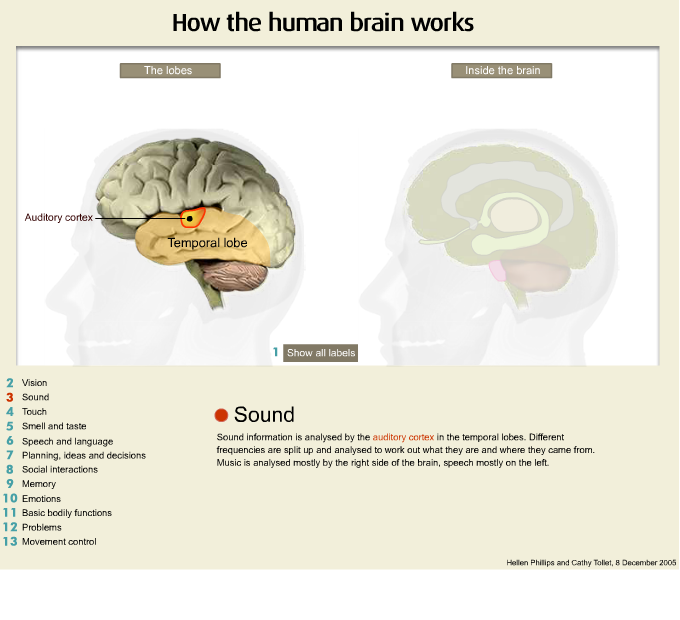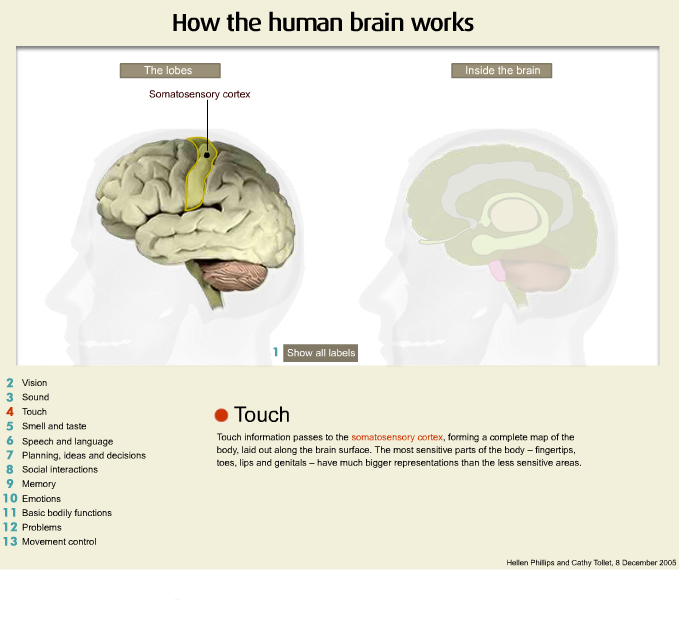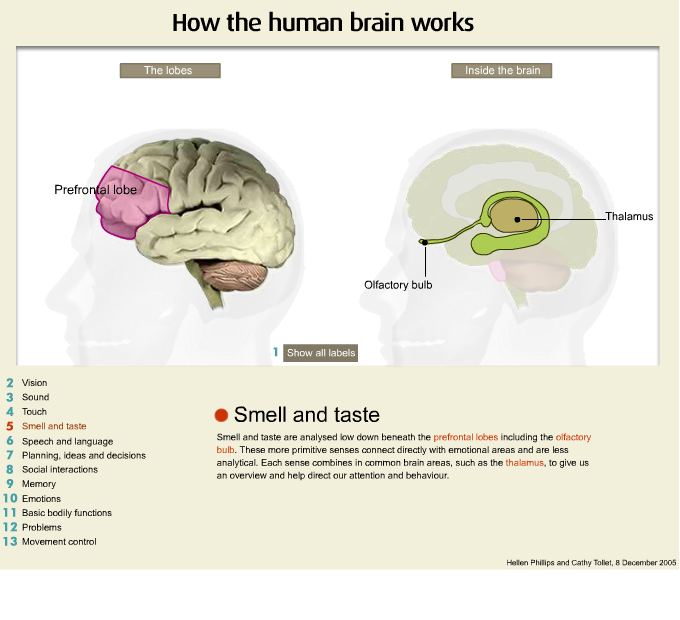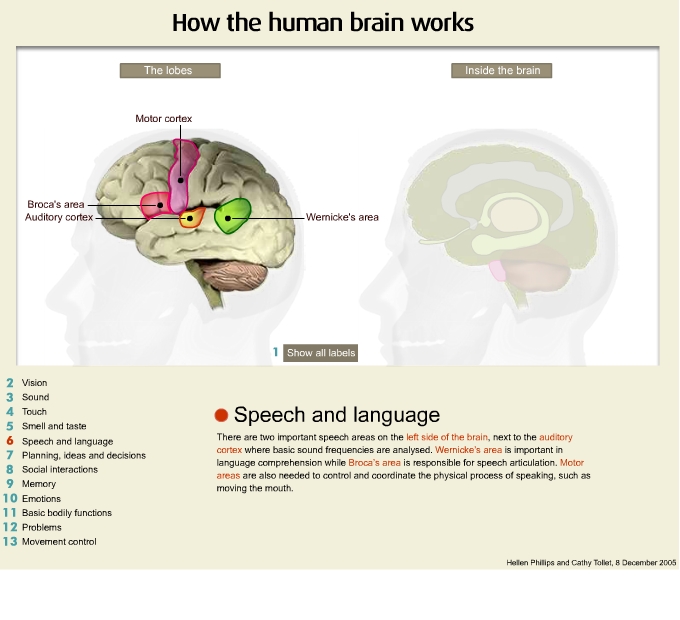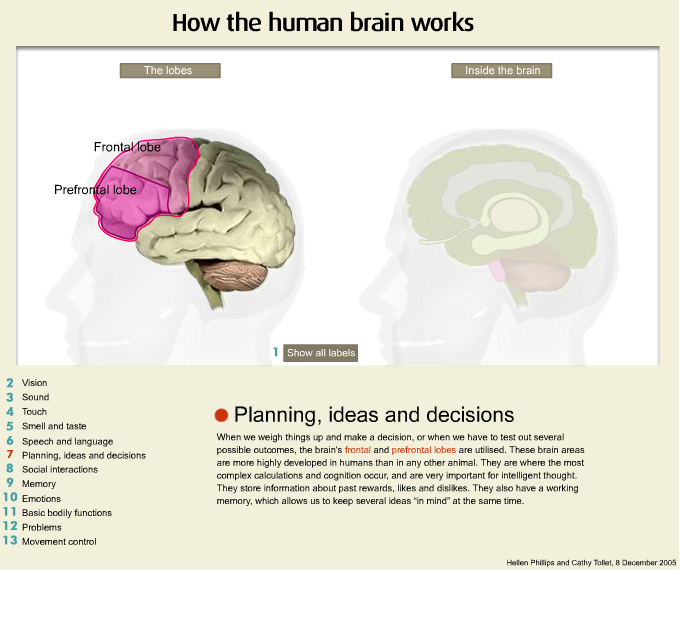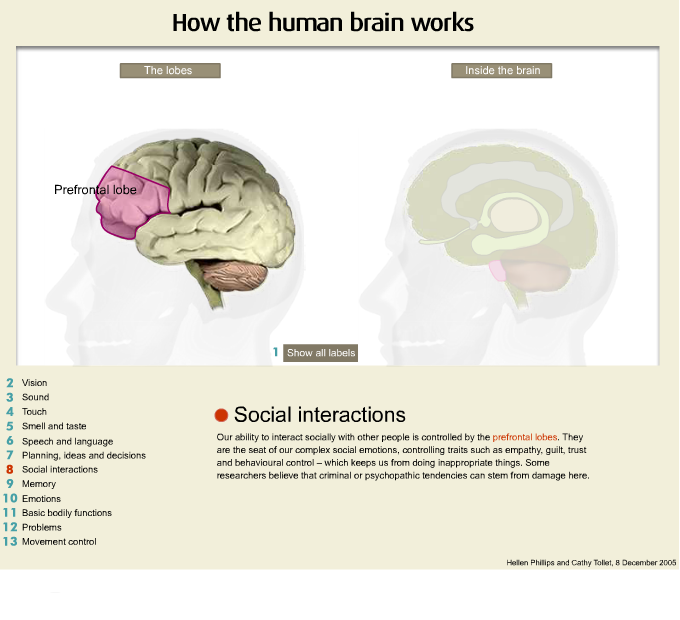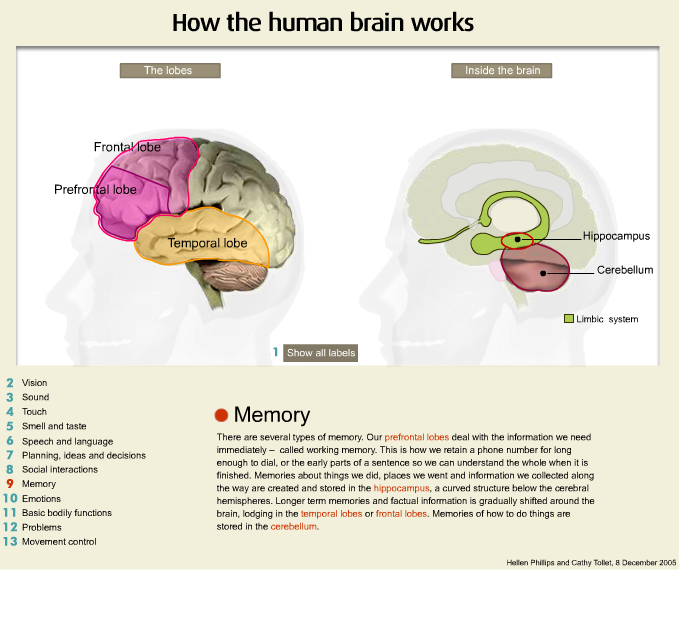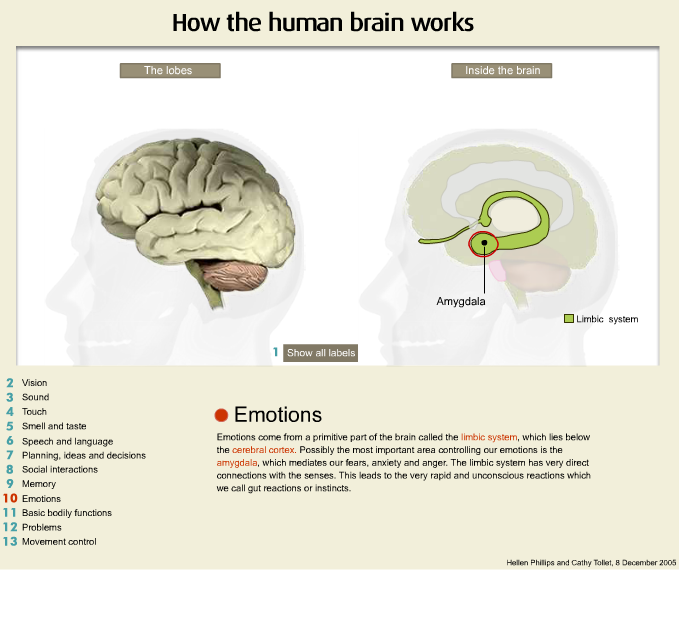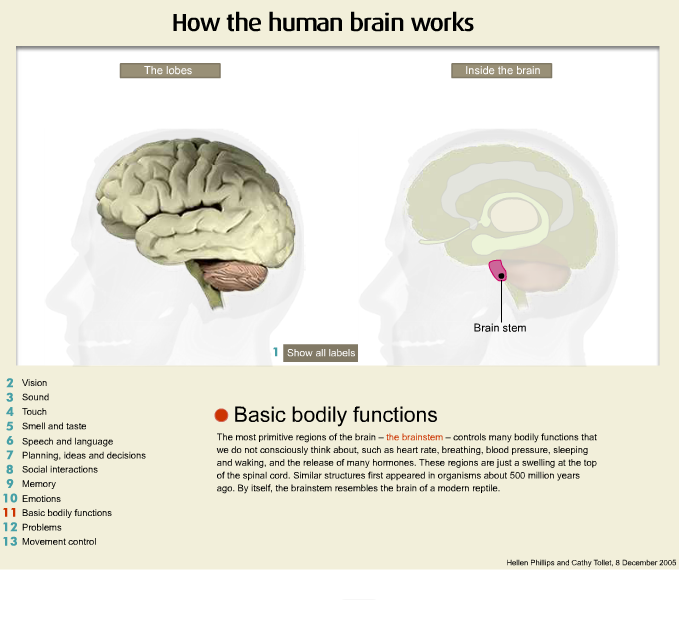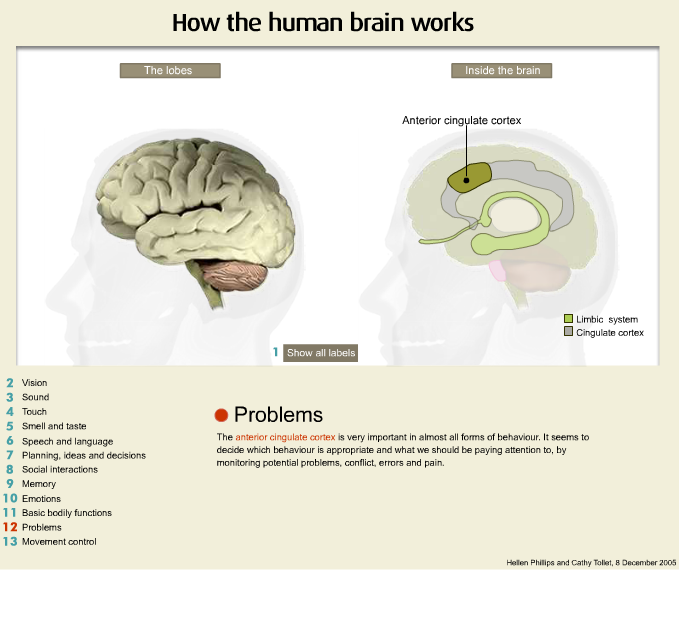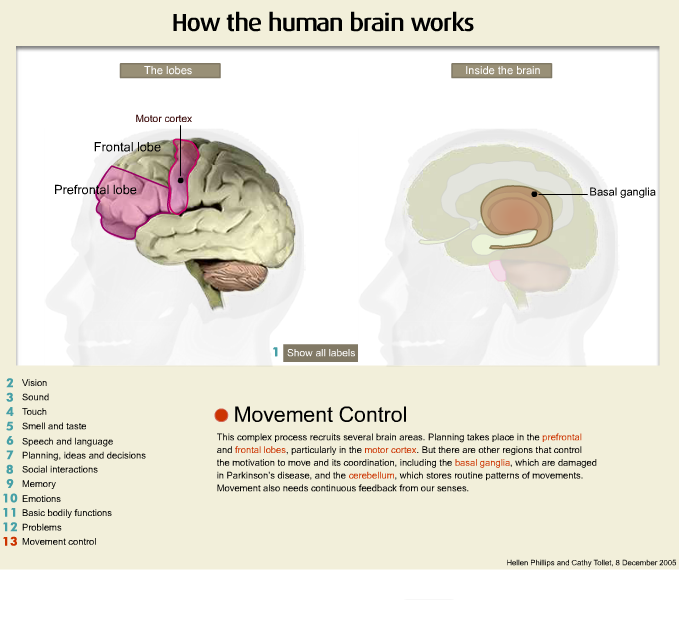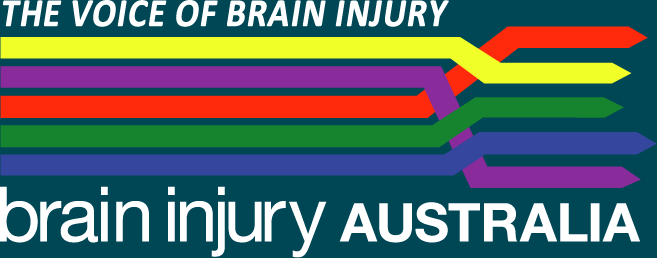The brain and mild TBI
- mild TBI:
Injury to the Brain - Brain
Graphic - Brain graphic:
Details - Nervous
system - Neurons
-
How it
all works
Mild TBI Brain Injury
What Happens in a Traumatic Brain Injury (TBI) A blow to the head can occur in a car accident, a fall, when the skull is struck by a blunt or heavy object, or in other ways. In most cases there are no lasting symptoms or ill effects. This is because the brain is surrounded by shock absorbing liquid and covered by the skull. Often these are enough to protect the brain from damage.
Sometimes the force of impact is more severe. This can cause the skull to break or fracture. When the skull fractures this absorbs some of the force of the blow and protects the brain.
When the head is hit the brain may be shaken around inside the skull. This can cause the brain to get bruised if it hits the inside of the skull hard enough. Like a black and blue mark on your arm or leg this will recover with time. If there are many bruises on the brain there will be some swelling so recovery may be slower.
The brain is made of many thousands of long, thin nerve fibres. Some of these nerves can get stretched or broken if a blow to the head is severe enough. Although these nerves cannot be seen without a microscope, we know that they can recover because many people recover completely in time.
Like any other part of the body, the brain has blood vessels in it. Some of these blood vessels can tear and bleed soon after injury. The bleeding usually stops on its own and the blood vessels will heal.
Bruises, swelling, torn nerves and broken blood vessels are the causes of symptoms after a TBI. Your doctor will have examined you for signs of brain injury and prescribed treatment as appropriate. Most people who suffer a mild TBI recover completely in time because the damage is minor and heals.
Introduction
To understand traumatic brain injury, its effects, impairments and impacts on th person and family members it is helpful to have some understanding of the brain and its functioning.
Different areas of the brain control different functions.
SLIDES: To pause: Hover mouse over slide. To continue: move mouse off slide.
To go to a specific slide: Click on slide numbers below.
(c) Copyright - See: Module 1: An Introduction to Traumatic Brain Injury www.TBIStaffTraining.info
Brain animations - How the brain works
SLIDES:
To pause: Hover mouse over slide. To continue: move mouse off slide.
To go to a specific slide: Click on slide numbers below.
The nervous system
The brain communicates messages through a complex network of nerves that travels throughout our body. The brain nerves together make up the ‘nervous system’, whilst the brain and spinal cord together constitute the ‘central nervous system’.
On their own, the nerves that run throughout our body are called the ‘peripheral nervous system’. They relay information from the brain through the spinal cord to the rest of the body and back again.
The ‘autonomic nervous system’ is part of the peripheral nervous system. It conveys messages from all of the organs in our chest, abdomen and pelvis. For example, it manages our "fight and flight" responses, and our "rest and digest" responses. It looks after the automatic activities of our heart and blood vessels and plays an important part in sexual response and bladder control.
Based on Brainlink Fact Sheet 1 Understanding the Brain www.brainlink.org.au and material from the Brain Injury Rehabilitation Directorate
Neurons
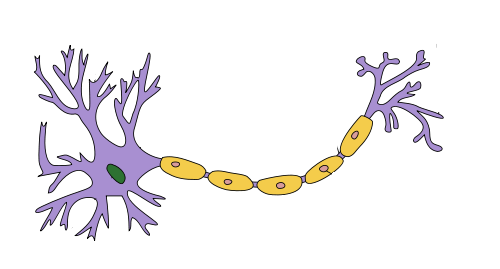
These are the basic components of the nervous system, also called are nerve cells or neurons. Neurons are a special type of cell that process and transmit information by electrical and chemical signaling.
We are born with about 100 billion neurons that must last a lifetime. Unlike all the other cells in the body, neurons usually cannot replace themselves if they die or are damaged.
The ‘grey matter’ of the brain is made up of neuronal cells. It can be found on the surface of the cerebral hemispheres and the cerebellum, as well as in the depths of the cerebrum, cerebellar nuclei, brain stem and inner part of the spinal cord.
‘White matter’ is found in the inner part of the brain and outer part of the spinal cord. It is made up of bundles of myelinated nerve fibres called axons, which connect various grey matter areas to each other, and carry nerve impulses between neurons. These axons are covered by a white, fatty substance called myelin (hence the term ‘white matter’), which insulates them, like the plastic coating of an electric wire. Myelin acts as an insulator, increasing the speed of transmission of all nerve signals. The axons then bundle together, like the individual telegraph wires in a cable, to form a nerve.
Based on Brainlink Fact Sheet 1 Understanding the Brain www.brainlink.org.au and material from the Brain Injury Rehabilitation Directorate
How it all Works
The brain is in constant contact with all parts of the body, sending instructions and receiving feedback from the senses. The axons carry these messages as tiny electrical currents or nerve impulses.
Outgoing messages
Messages sent from the brain to activate the muscles of the body travel along the motor pathways. The neurons that make up these pathways are called motor neurons.
Incoming messages
Incoming messages: Messages sent from the senses back to the spinal cord and brain come along the sensory pathways. These are called sensory neurones.
Damage to the brain may affect many different functions and abilities. An injury can result in a serious disability that will interfere with a person’s daily functioning and personal activities, often for the rest of their life. While the outcome of the injury depends largely on the nature and severity of the injury itself, long-term effects are difficult to predict and will be different for each person. It is common for people with a brain injury to get tired more quickly, have difficulty with short-term memory and find it more difficult to concentrate and to remember information.
The areas in which people with ABI may experience long-term changes include:
- Medical difficulties (e.g., epilepsy)
- Changes in physical and sensory abilities (e.g., weakness, tremor, impaired vision or smell)
- Changes in the ability to think and learn (cognition)
- Changes in behaviour and personality (psychological)
- Communication difficulties (e.g., slow or slurred speech , difficulty following conversation).
Based on Brainlink Fact Sheet 1 Understanding the Brain www.brainlink.org.au and material from the Brain Injury Rehabilitation Directorate
